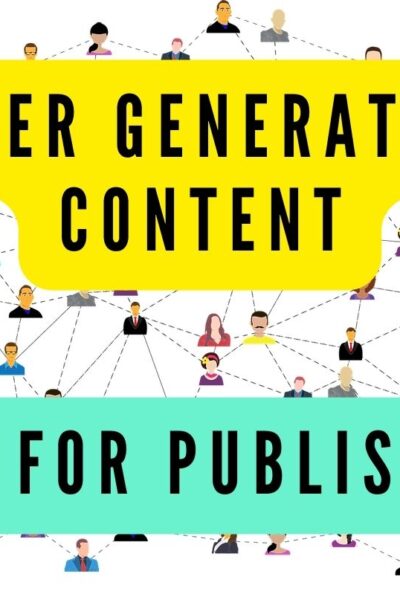Whether we like to admit it or not, we live in an era of content saturation. As MarketingProfs research shows, more than two million new articles get published every day. And, by the looks of it, this number will continue to grow over time.
People are now drowning in content. And that’s negatively influencing both readers and publishers.
For the readers, this constant new tidal wave of content is making it hard for them to stay in the loop and control the type and amount of information they’re consuming. As a result of that, they’re growing impatient and resilient to everything that’s being thrown their way.
For publishers, the content saturation phenomenon is directly related to the change in their readers’ behavior. The more resilient their readers become, the harder it becomes for publishers to break through the noise and instigate genuine engagement.
There’s only one solution to this problem: investing in better quality content.
For most publishers, that’s easier said than done. Those who make their bread and butter online through selling ad space on their website believe they are basically conditioned by their business model to up their production and constantly churn out more and more content.
At least, that’s what most think.
However, we at Content Insights know better. The success of our clients has taught us that publishers can achieve so much more with less if they invest a bit of energy to truly understand their audience and produce content that’s always in line with their readers’ interests and which is – as a result – less likely to become immediately dated.
Content that keeps on giving
In Content Insights, content gets analyzed from all different angles and perspectives. We try to offer our clients enough information in the analytics so that they can successfully interpret the success rate of their existing content efforts and increase their traffic, engagement, or reader loyalty (depending on their editorial priorities).
Down in the depths of the Content Insights Labs, our data science team has come up with a great way to highlight particularly exceptional content. Our app recognizes three special types of content: longtail, everlasting, and reborn.
‘Longtail’ is a special classification created by Content Insights that singles out all articles on the publishers’ websites that are generating non-internal traffic and social actions three days after they’ve been published.
‘Everlasting’ groups and highlights older articles that constantly receive above-average traffic when compared to the other articles on the website published within the last 30 days.
And ‘Reborn’ points the publisher’s attention to older articles that have suddenly started to receive external traffic again.
Today, I’m going to talk about Everlasting content and why it matters for publishers:
Everlasting vs. Longtail
Unlike Longtail, Everlasting is not about quick wins. This type of content increases brand authority, continually drives relevant traffic to your domain and holds a valuable position in search engine rankings for months – or even years – from when it was first published. It’s the most efficient instrument for capitalizing on valuable search traffic and positioning your brand as the go-to resource for a particular theme or topic.
Due to its great visibility in search, Everlasting content helps publishers to position themselves as experts and thought leaders. Also, they can improve their social media presence because this type of content often ‘resurrects’ and gets reshared online, bringing fresh referral traffic to the publication.
Our research has shown that Everlasting content is brilliant at holding readers’ attention and it’s also unrivaled in terms of engagement rates, compared to any other type of content. Audiences typically connect and reconnect with brands through Everlasting content: they are inspired to read more articles, they typically browse through more pages, and spend more time attentively consuming the content on the website.
Two examples of great everlasting content
Everlasting articles are basically the golden geese of the news world. They just keep giving and giving, and everyone is interested in acquiring more of these rare birds. They are great for generating lots of engagement and tightening relationships with loyal audiences. Of course, producing everlasting articles is never an easy job. Most of these articles require a lot more research and efforts from journalists and certainly far more than regular articles.
However, they certainly do pay off.
Let’s cover a couple of examples that prove investing in the production of everlasting articles makes a lot of sense:
First, let’s look at Süddeutsche Zeitung, a highly respected German newspaper, famous for leading the Panama Papers project along with the Consortium of Investigative Journalists. A while back, SZ published an article about a deal that the Big Coalition agreed upon before they formed the government in Germany in March 2018.
In case you’re not familiar with the story, the coalition was formed by Conservatives and Social Democrats and they took 171 days to form a government after the election.
Süddeutsche Zeitung’s journalists analyzed the 174-page deal and found 136 tasks the coalition pledged to solve. The article highlighted these pledges and updated the public on the status of each of them. Talk about going the extra mile, right?
Five reporters worked tirelessly on this article (with additional help, of course) and it continued to feed it additional information.
Content Insights categorized this piece as Everlasting for obvious reasons. The publisher continued to work on it, feed it with additional information, and promote it.
The second example comes from AD.nl (a news portal part of De Persgroep) and it’s about politics. To get the most out of the local elections, AD.nl created a quiz that helped their readers understand all the involved parties in the Netherlands’ elections and match them with candidates that shared their views and beliefs. It was a great attempt to educate voters and make sure that they were well-informed about all available candidates before they decide how to cast their vote.
Of course, this specific piece of content was well received by the public and it was viewed by various people during the whole election run.
Closing words
To attract, and retain readers, you must be willing to experiment and go beyond the norm. As we have seen numerous times before, special reporting projects and alternative ways of writing stories bring in the gravy. Just as Seth Godin once said, people notice anomalies. We all have an eye for detecting when something is different or off the grid – and we instinctively fly towards it just like moths chase sources of light.
For instance, De Persgroep case was successful not only because the format itself was novel, but also because they understood that people will consume content more thoroughly when it’s presented in a way that’s relevant to their own lives. If the innovation in question is aligned with your audience’s desires and needs, you are well on your way to success.
Is investing all that additional time into content worth the effort? Absolutely. Evergreen content often goes hand in hand with creating a loyal readership. At a time when so many newsrooms switched to reader revenue funding model, identifying what triggers loyal behavior became the number one goal.









